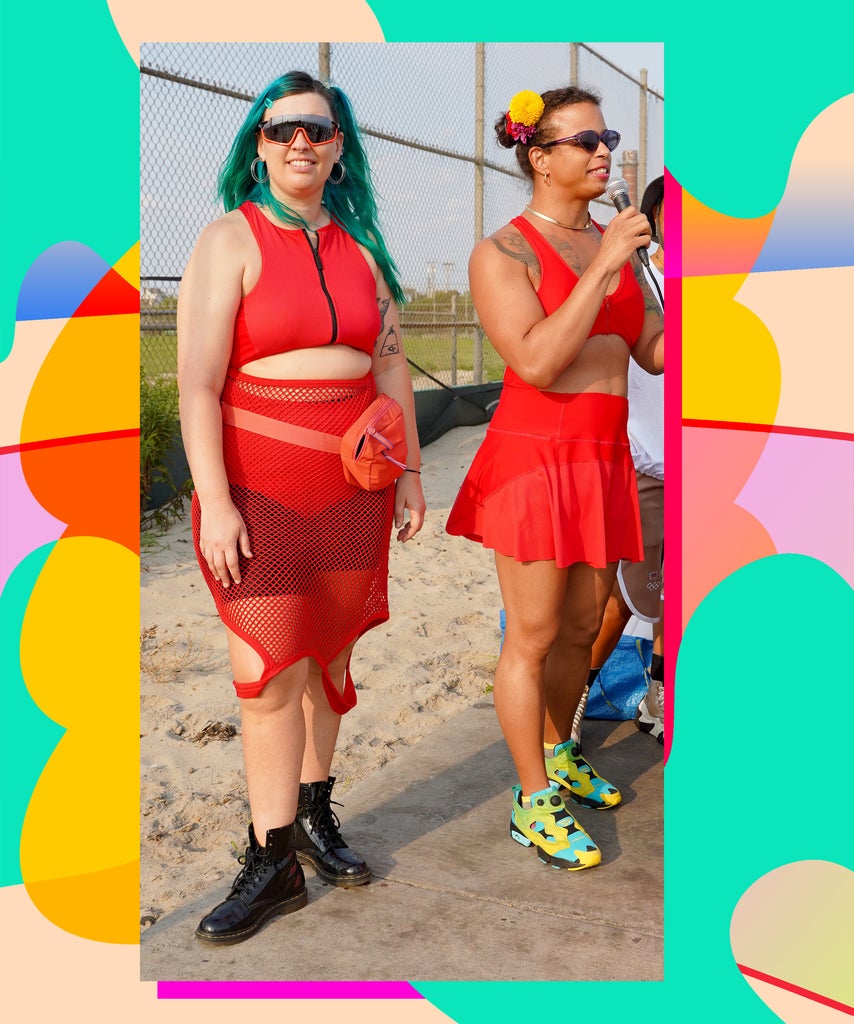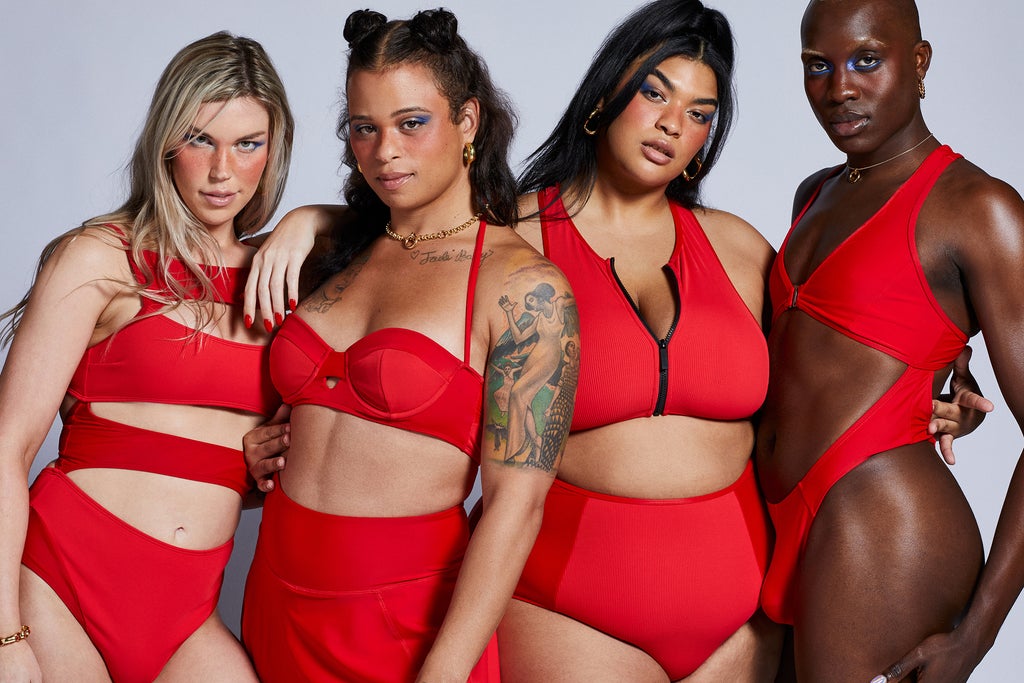
Becca McCharen-Tran is waiting for a call from DHL. The samples from Chromat’s Spring 2022 collection of inclusive swimsuits — for trans femmes, non-binary people, and intersex bodies, and developed with activist and filmmaker Tourmaline — is ready and waiting in the factory. She’s just trying to get them Stateside. “I need to import these garments to Miami so I can actually start selling them,” she says at the SCADStyle conference — hosted by the Savannah College of Art & Design in Atlanta where she was a guest speaker in April — noting production issues and the pandemic contributed to delays. “It’s been a long time coming.”
McCharen-Tran and Tourmaline’s collab was introduced in September at a pop-up runway show on Jacob Riis Beach, a haven for queer, trans, and gender-nonconforming New Yorkers. The collection — which comes in sizes 4X to extra small and is made from nylon spun from recycled fishing nets — is fitting for the Miami-based label that has valued sustainability and inclusivity long before it became fashionable to do so. Since the beginning, the brand showcased models of all sizes, as well as models with disabilities, on the runway.
“There’s no rule that says you have to work with people that are size four or you have to work with all cis people,” they say. “As a designer, you choose who you cast, and that is a responsibility. And I think maybe some people are just fine with the status quo, but every choice is political, no matter which direction you go.”
It’s also why McCharen-Tran, who was an urban planner before she learned how to sew, turned to the swimwear category. “One of the reasons swim was so successful is because it is such a vulnerable garment. It’s something that [some] people feel deeply uncomfortable wearing in public,” they told students gathered at SCADStyle. “Our ethos [is]: celebrate your body; be comfortable in your body. Here’s a million different bodies that may look like yours and they look amazing, so you are too.”
While attending SCADStyle, Refinery29 caught up with McCharen-Tran to chat about the collection. Ahead, what we can expect from the new drop and Chromat in the future. (And, in case you were wondering, DHL came through — and the suits are now for sale.)
What makes the new collection different from Chromat’s previous offerings?
We really are creating an entirely new category that does not exist in the market. Not to be someone who’s really tooting my own horn, but when I was doing research for the collection, for girls with penises, there literally is nothing. You have to wear menswear bottoms; you don’t have a high-waisted bikini bottom. As a woman, a high-waisted bikini bottom, that’s a must-have. I think this is going to be really interesting to get real consumer feedback. For years I’ve had people DM me like, “I’m trans femme, what bottoms do you recommend?” So I know there is a need.
It’s important, because we are for the people, and we want to make sure that we’re doing things that are serving people. We would never want to make something that just to make it.
Diversity and inclusion have always been part of Chromat’s DNA. Other brands are finally catching up, but sometimes it veers into tokenism. Where do you see the industry headed?
I have really struggled with figuring out what I feel about tokenism. Because sometimes it feels like a positive thing — to just have at least someone there where there was no one. But on the other side, the feeling of the person who is tokenized, it’s such a negative feeling for them. It’s traumatizing and damaging. So I think, if it’s not a holistically inclusive place, it actually does more damage than good to the people who participate in that.

You showed the new collection last September at Jacob Riis Beach, instead of a typical New York Fashion Week venue, and skipped last season in February. Do you think you’ll show on the runway again?
I think I’m gonna be focusing on [showing a new collection] once a year, instead of twice a year; that feels more sustainable. Now I’m more thinking about quality of life for myself and my team. The pandemic gave me so much time to kind of peel back what’s smoke and mirrors and what’s really important. I feel like one collection a year is the perfect amount, because I don’t want to make anyone stay up till 2 a.m. anymore. It’s not worth killing yourself over and not having a life.
You’re chromat_party on TikTok. How do you think the platform is shaping the fashion industry?
I’m personally obsessed with TikTok. It’s literally like TV to me. I’m on DIY TikTok. I love to do the dances and there’s so much politics and social justice and knowledge-sharing and hacks. Maybe it’s just my little algorithm, but one thing I’ve seen on TikTok is so many upcyclers and DIY people. I genuinely feel that we all need to be upcycling. If you can sew, start buying more from Goodwill and less at the mall because there are already so many garments out there. We need as a society to change the flow of consumerism and start reusing things.
What’s next for Chromat?
I’m trying to find that artist in myself again, like that little Björk-loving 10-year-old Becca. I think the pandemic offered me a lot of reflection time. I’m also trying to think of systems outside of capitalism; I kind of went on a whole Marxist journey during COVID. I felt like COVID exposed the system for what it is — who is winning and who is losing? [I am thinking,] how can we increase smaller businesses in every country in every city so people can do upcycling on a larger scale?
At Refinery29, we’re here to help you navigate this overwhelming world of stuff. All of our market picks are independently selected and curated by the editorial team. If you buy something we link to on our site, Refinery29 may earn commission.
Like what you see? How about some more R29 goodness, right here?
How Chromat’s Jacob Riis Show Is Changing Fashion

No comments:
Post a Comment